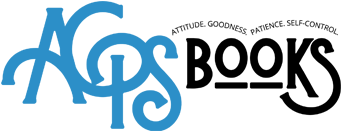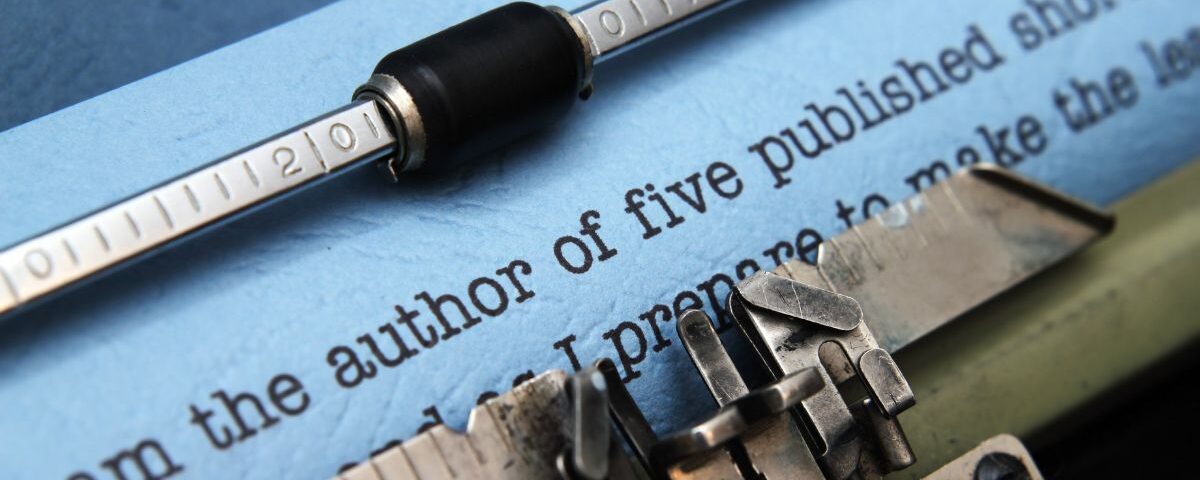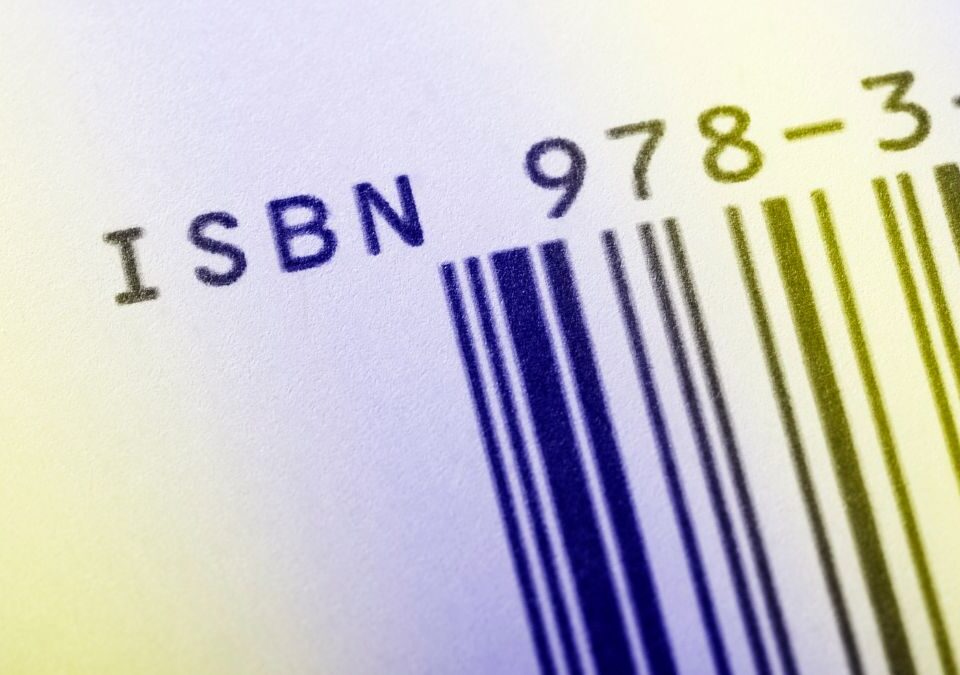
Short Synopsis: How to Summarize Your Book and Hook Readers
September 23, 2025
How to Become an Editor: 7 Steps to Launch Your Book Editing Career
September 24, 2025If you’re wondering how much does it cost to publish a book, you’re not alone. Aspiring authors often ask this question as they plan their publishing journey. The truth is, the cost to publish a book can vary widely depending on a number of factors. Are you going the traditional route or self-publishing? Is your book a simple text-only paperback, a full-color children’s picture book, or something in between? In this comprehensive guide, we’ll break down the real costs of publishing in 2025 – from editing and design to printing and marketing – so you can plan your budget wisely. (All figures are in USD, the standard currency in the U.S. publishing market.)
Traditional Publishing vs. Self-Publishing: Who Pays the Bill?
One of the biggest factors in how much it costs to publish a book is the publishing route you choose. In traditional publishing, a publishing company buys the rights to your book and covers most of the publication costs. This means that editing, formatting, cover design, and proofreading are typically paid by the publisher, not the author. For the author, publishing through a reputable traditional house can be almost free upfront – in fact, you may even receive an advance payment. However, traditional authors usually earn lower royalties per book sold and have less control over the process. You might still invest some of your own money in book promotion or travel, since publishers today expect authors to help market their work (author-incurred marketing costs can range from a few hundred to thousands of dollars).
By contrast, in self-publishing the author is the publisher – meaning you as the author cover all the costs to publish your book. These costs include hiring editors, cover designers, formatters, and any other services you need, as well as printing and distribution expenses. You’ll pay out of pocket, but the upside is you retain full creative control and a higher percentage of royalties from sales. Self-publishing costs can range from very low to quite high, depending on what you decide to invest in quality and marketing. It’s technically possible to publish an e-book for almost $0 if you do everything yourself, but most authors spend some money to ensure a professional result. According to industry analyses, self-publishing a book can cost between $100 and $5,000 depending on the level of quality you aim for. Many independent authors report spending around $2,000 to $4,000 on a high-quality self-published book on average. In one recent 2025 survey of publishing professionals, the typical range for a professionally produced self-published book was estimated at about $3,000 to $6,000. That’s quite a range! The key is understanding where that money goes, and which expenses are truly necessary for your project.
Important note: Be cautious of so-called “publishing companies” that ask authors to pay hefty fees for publication while keeping your book’s rights – these are often vanity publishers. With true traditional publishing, the publisher pays you (and recoups costs from book sales), you should never have to pay a genuine publisher upfront to publish your book. If you’re investing your own money, make sure you retain your rights and royalties.
How Much Does It Cost to Publish a Book: Key Factors and Cost Breakdown
So, how much does it cost to publish a book in practical terms? Let’s break down the key cost components you’ll likely encounter when self-publishing (or working with a publishing service). Understanding these will help you budget effectively:
1. Editing and Proofreading
High-quality editing is often the largest expense in publishing a book, but it’s money well spent. Depending on your manuscript’s length and the level of editing needed, professional editing can range widely in price. For a typical novel (~70,000–80,000 words), copyediting and proofreading services might cost anywhere from about $1,000 up to $3,000 or more according to Reedsy. More intensive developmental editing (big-picture story or structural editing) will be on the higher end. Shorter books generally cost less to edit; for example, children’s picture books (under 1,000 words) might only be a few hundred dollars to edit since they’re so brief. On the other hand, epic fantasy novels or complex non-fiction works can cost extra due to their length and complexity. You can save on editing costs by self-editing thoroughly and using beta readers first, but hiring a professional editor is highly recommended to polish your work. It can make the difference between a mediocre book and a great one.
2. Cover Design
Your book’s cover is the first thing readers see, so it pays to have a professional design. Cover design costs vary based on the designer’s experience and the complexity of the cover. You could obtain a simple premade cover for under $100, but a custom-designed, genre-appropriate cover from an experienced designer typically ranges from around $300 up to $1,000+. In some cases, bestselling cover designers or illustrated covers can cost even more (top-tier cover artists might charge $1,500 or more for an intricate design or multiple revisions). Remember, you’ll usually need two versions of the cover: one for the ebook (front cover only) and a full wraparound cover for print (front, back, and spine). If you’re publishing a children’s book with illustrations, you might reuse one of the book’s illustrations for the cover to save cost. In fact, about 60% of experienced children’s book cover designers charge under $750 for a cover, often leveraging existing art from the book. No matter your genre, a captivating cover is a worthy investment to attract readers.
3. Book Formatting and Layout
Once your text is edited, it needs to be formatted for publication. This includes interior layout design for print (choosing fonts, chapter headings, margins, page numbers, etc.) and formatting for eBook (ensuring the text flows correctly on Kindles, tablets, phones). You have DIY options here, tools like Vellum, Atticus, or even Microsoft Word can be used if you’re tech-savvy – which can reduce costs. DIY formatting might be essentially free if you already have the software, though it requires time and patience. If you prefer to hire a professional formatter or book designer, expect to pay anywhere from roughly $50 up to a few hundred dollars for formatting services, depending on your book’s length and complexity. For instance, a straightforward 60,000-word novel with no images will cost less to format than a textbook with tables or a cookbook with lots of images and special layouts. Many publishing service companies (including publishing packages from agencies like ours) include formatting as part of the package. For example, our team at AGPS Books offers professional layout and formatting in all our publishing formats – ensuring your book’s interior looks as good as the cover, without you having to wrestle with margin settings.
4. Illustration (if applicable)
This cost won’t apply to every book, but it’s critical for certain genres. If you’re publishing a children’s picture book, a graphic novel, or even a coloring book, illustration will likely be one of your biggest expenses. Commissioning original illustrations can be pricey because it’s skilled, labor-intensive work. Rates vary greatly: some illustrators charge per image or per page, others quote a flat project fee. As a ballpark, many professional children’s book illustrators might charge anywhere from $1,000 up to $5,000+ for a full 24-32 page picture book according to Reedsy. The exact price depends on the illustrator’s experience, the number of illustrations, and the complexity or style of artwork. Children’s books typically have fewer words, which keeps editing costs low, but illustrators can cost thousands of dollars and sometimes even share in royalties for young children’s book. If you have the artistic skills, you could illustrate the book yourself and save money, but be sure your artwork meets professional quality standards. For authors on a tight budget, alternatives include using stock illustrations or hiring a less experienced illustrator (though you often “get what you pay for” in terms of quality). The bottom line: if your book needs pictures, expect illustration to be a significant part of your publishing cost.
5. Printing and Distribution
In today’s world, publishing a book doesn’t require a huge upfront printing bill thanks to print-on-demand services. If you’re releasing a paperback or hardcover (as opposed to an eBook-only release), you’ll need to consider printing costs. The good news is that platforms like Amazon KDP and IngramSpark allow you to list your book without any setup fee in many cases (IngramSpark has a small setup fee around $49, but it’s often waived during promotions). With print-on-demand, each time a reader orders your paperback, the platform prints and ships it, then deducts the printing cost from your royalties. For example, Amazon’s print-on-demand cost for a standard 200-page black-and-white paperback is around $3.50–$4.00 per copy. That means if you price your book at $12.99, roughly $3-4 of that goes to printing, and you receive the rest (minus Amazon’s percentage). If your book’s interior has color pages, be aware the print cost jumps dramatically – that same 200-page book would cost around $14 per copy to print in full color! Full-color printing is expensive, so many authors stick to black-and-white for the interior unless color is essential (children’s picture books, for instance).
If you plan to publish a paperback book, you might be wondering about the cost differences compared to an eBook. The main additional costs for a paperback are the one-time expenses of print formatting (which we covered above) and cover design for print (designing the spine and back cover, usually included in a cover designer’s quote) – plus the per-copy production cost whenever a book is printed. There’s no requirement to order a huge print run upfront if you use print-on-demand; you can print copies as they’re sold, or order a small number of author copies for yourself. However, if you do choose to do an offset print run (for example, printing 500 or 1,000 copies to sell at events or through bookstores), you’ll pay a larger amount upfront. Bulk printing can lower the cost per book, but it only makes financial sense if you’re confident you can distribute those copies. For most first-time authors, POD (print on demand) is the safest, most cost-effective route to publish a paperback book.
Distribution itself is often not very costly for self-publishers. Listing your book on major online retailers (Amazon, Barnes & Noble online, Kobo, Apple Books, etc.) is usually free; these platforms take a cut of sales instead of an upfront fee. If you want to get your book into brick-and-mortar bookstores or libraries, you may need to make it available via IngramSpark or a similar service, and offer standard wholesale discounts, which can affect your revenue per copy but not necessarily require upfront payment. Don’t forget the cost of ISBNs: in the US, an ISBN (International Standard Book Number) for your paperback isn’t free unless you accept a “free ISBN” from a platform like KDP (which can only be used on that platform). Buying your own ISBNs from Bowker costs $125 for one or $295 for a block of 10. One ISBN is required per format (hardcover, paperback, eBook each need their own). Many self-publishers opt to use the free ISBN on KDP to avoid this cost, but if you plan to sell your paperback widely, investing in an ISBN can be worthwhile. Agencies like AGPS Books can also assist authors with ISBN registration and often include it in service packages (we provide ISBNs for our clients’ books as part of our packages, so they don’t have to purchase one separately).
At AGPS Books, we also provide a dedicated ISBN service starting at just $79. This includes Bowker registration, barcode creation, file setup, and format guidance, with turnaround in as little as 1–3 business days depending on the tier. For authors who want to secure professional ISBNs without the hassle, our team ensures everything is handled smoothly so your book is ready for both print and digital markets.
6. Marketing and Promotion
Strictly speaking, marketing is optional, you can publish a book without spending a dime on promotion, but “if you build it, they won’t necessarily come.” A successful book launch often involves some marketing investment. Marketing costs are extremely flexible: you might spend $0 and rely solely on free tactics like social media, or you could invest thousands into a professional book publicity campaign. Most self-publishing authors fall somewhere in between. Common expenses include book launch ads (for instance, Amazon Ads or Facebook Ads where you might set a budget of say $50-$200+ per month during launch), promotional services (like bargain book email promotions, which can cost $25-$100 each), and possibly hiring a PR professional or virtual assistant for marketing help (could be a few hundred dollars for short-term assistance). It’s wise to set a marketing budget that you’re comfortable with and look for high-ROI activities. For example, spending $100 on a Goodreads giveaway or BookBub Featured Deal (if you can get one) might yield more results than $100 on random social media ads. Many traditionally published authors also invest in their own marketing, because publishers often focus their limited marketing budgets only on books expected to be big hits. As a result, whether you go traditional or indie, consider allocating at least a few hundred dollars for marketing your book, if possible. That said, if funds are tight, there are plenty of low-cost marketing ideas to explore (networking with bloggers, leveraging your personal network, local book signings, etc.) that can help get the word out without breaking the bank.
Fun Fact: Author Andy Weir originally self-published his novel The Martian on his personal blog for free, posting one chapter at a time. Reader demand led him to upload it as a 99¢ ebook on Amazon – and it became a huge success, eventually leading to a traditional book deal and a Hollywood movie. This rare case shows that it’s possible to publish a book with virtually no money and still find an audience. However, for most authors, investing in professional editing, design, and marketing greatly improves the chances of success!
How Much Does It Cost to Publish a Children’s Book?
Publishing a children’s book can be a different ballgame from publishing a text-only novel. If you’re asking how much does it cost to publish a children’s book, the answer will heavily depend on the artwork. Children’s books, especially picture books for younger kids, are typically full of illustrations on every page. As we discussed, hiring an illustrator can cost a few thousand dollars in many cases. On the lower end, you might find a talented new illustrator for $500-$1000, but established children’s book illustrators often charge between $1,500 and $5,000 for a 32-page book. Don’t forget to budget for the cover if it’s not included – though often one of the interior illustrations can double as the cover image with some added text design.
On the plus side, other costs for a children’s book might be lower. Shorter length means less expensive editing (you might pay a few hundred dollars for professional editing of a picture book manuscript, as opposed to thousands for a novel). Also, formatting a children’s book (layout) can be straightforward if illustrations are large and there’s minimal text per page – but you may need a formatter experienced in fixed-layout ebook formats if you plan to release it on Kindle or iPad, so the pages display exactly as designed. Print costs for children’s books can be higher per unit because they’re often printed in color (each copy of a full-color book is more expensive to print, as noted earlier, around $10-$14 for a typical picture book vs. $3-$5 for a black-and-white novel). Many children’s authors choose to release in hardcover for durability, which also increases print cost.
To give a rough estimate: self-publishing a children’s picture book might cost roughly $5,000 on average when you add up illustration, editing, design, and printing setup. It can be done for less with careful budgeting (or if you illustrate it yourself), or it can cost more if you hire top-tier talent. If you opt for a print run of hardcover books, you’ll have upfront printing expenses too. Every project is unique, but plan for illustration to dominate your budget. At AGPS Books, we recognize the special needs of children’s authors – for example, we offer an “Illustrated Kids Pro” package tailored for children’s books, which helps authors bring their story to life in both print and fixed-layout eBook formats with professional formatting and design. The goal is to ensure that the final book is beautiful and engaging for children, while keeping costs transparent.
How Much Does It Cost to Publish a Coloring Book?
The popularity of adult coloring books in recent years has drawn many creatives into self-publishing their own coloring book projects. So, how much does it cost to publish a coloring book? In many ways, the costs are similar to publishing a children’s illustrated book, with one key difference: coloring books typically have black-and-white line art instead of full-color illustrations. This can influence costs in a couple of ways:
- Illustration/Artwork: You’ll need line drawings for every page or spread. If you’re an artist, you might create these yourself with only your time as the investment. If not, you’ll need to hire an illustrator or purchase/license artwork. Commissioning custom line art can cost a few hundred to a few thousand dollars depending on the number of illustrations and complexity. Some coloring book creators use stock vector images or public domain art to reduce costs, but a unique, cohesive art style will make your book stand out. Plan on artwork being the primary expense for a coloring book (aside from your own labor if you do it yourself).
- Editing and Text: Most coloring books have minimal text (maybe an introduction or quotes alongside the art). Thus, editing costs are usually low, you might only need a light proofread, which could be under $100, or you can have friends help review any text.
- Formatting and Print: Formatting a coloring book for print can be somewhat simpler since it’s mostly images, but you’ll want a PDF that preserves the placement and quality of your line art. Professional formatting might be a few hundred dollars if you need assistance with layout or converting art files to print-ready PDF. Print costs for a coloring book are typically the same as any black-and-white interior book (because line art is printed in black ink). That’s great news: it’s inexpensive to print per copy – roughly $3-$5 each for a standard length coloring book, depending on page count and trim size. If you include a color cover (which you likely will), that doesn’t add much cost per unit. The paper quality (thickness) could be a factor; thicker paper is nicer for coloring (to prevent marker bleed-through) but POD services generally have fixed paper options. You might consider a slightly smaller page count or simpler design to keep the book affordable for buyers if printing costs concern you.
Overall, publishing a coloring book might cost a bit less than a full-color children’s book simply because you can avoid the high expense of color printing. Your main investments will be the illustrations and cover design. Some entrepreneurial creators have launched coloring books for just a few hundred dollars by doing everything except printing themselves – drawing the art, doing the layout, etc. – whereas others invest more to hire professional artists. A realistic budget for a quality self-published coloring book could be in the low thousands of dollars (say $1,000–$3,000) if you’re paying for art and some design help. Like any project, it’s scalable: keep costs down by simplifying your art or handling parts of the process yourself, or spend more for a polished product that might command a higher price point. Many print-on-demand platforms (Amazon KDP, Lulu, etc.) make it easy to upload and start selling a coloring book with no upfront distribution fees, so at least getting it on the market won’t cost you extra.
How Much Does It Cost to Publish a Paperback Book?
When people ask how much does it cost to publish a paperback book, they’re often comparing it to publishing an eBook or just curious about the expenses specific to print books. Let’s clarify the costs involved in producing a paperback:
Upfront production costs: These include anything you must do to create the paperback version of your book, as opposed to just an eBook. You will need print formatting (interior layout designed for the print dimensions, PDF output) and cover design for paperback (which includes the spine and back cover). If you’ve already done an eBook, you might need to tweak or redo formatting for print, which could cost a bit more if you hire someone (often, formatters will do eBook + print as a bundle). Cover designers usually offer paperback full cover as an add-on to eBook cover design (sometimes for an extra fee of ~$50-$150). So, if you have an eBook ready, budget a couple of hundred extra dollars to prep a quality paperback layout and cover.
Printing costs: The major difference with a paperback is the cost of printing each copy. As discussed earlier, with print-on-demand you don’t pay upfront for, say, 500 books to be printed – instead, the cost is incurred per sale. It technically costs $0 to “publish” a paperback to Amazon or IngramSpark in terms of setup (aside from optional ISBN costs or small setup fees). The real cost comes when copies are produced. Each time a reader orders your paperback on Amazon, the printing cost (let’s say around $4 for a ~200-page B&W book) is taken out of the sale price, and you get the remaining royalty. If you order author copies for yourself (to sell at events or give away), you’ll pay that printing cost per copy. For example, 50 author copies might cost you 50 × $4 = $200 (plus shipping). Keep this in mind for your own budget if you plan on holding inventory or giving away copies.
Bulk printing (optional): If you anticipate needing lots of books on hand (for instance, you have speaking engagements or you want to sell directly at conferences), you might use an offset printer for a bulk print run. Bulk printing can significantly lower the unit cost (maybe $2-3 per book or even less for large quantities), but you’ll pay the full print bill upfront and handle storage and distribution of those copies. Printing 1,000 paperbacks might cost a few thousand dollars upfront, so this is only advisable if you have a clear plan to distribute them. Most first-time authors skip this and stick to print-on-demand unless there’s a specific reason.
In summary, the cost to publish a paperback book is mostly the combination of your production costs (editing, design, formatting – which you’d also incur for an eBook) plus any print-specific prep (full cover, print layout) and then the per-copy print costs which come out of sales. If you’re already self-publishing an eBook, adding a paperback might only add a few hundred dollars extra to your upfront expenses. It’s highly recommended to offer a paperback edition because many readers still love print, and it gives your book more legitimacy on Amazon (you’ll have a nice product page with a paperback option). Services like Amazon KDP make it effectively free to set up – you just have to invest in the files. At AGPS, our publishing packages always include paperback formatting and setup, because we believe every author should see their work in print without hassle. For example, our basic “Start & Publish” package (around $990) includes professional print layout, cover design, ISBN registration, and Amazon KDP setup, so an author can get a paperback to market without worrying about the technical details.
Tips to Manage Your Publishing Budget
Publishing a book involves many moving parts, but there are ways to control costs while still producing a great book. Here are a few tips to help you manage the expenses:
- Plan Your Budget and Prioritize: Determine how much you can afford to spend, and allocate funds to the most important areas. Generally, editing and cover design are worth the investment, as they directly impact book quality and reader appeal. If you have to choose, spend on those and consider DIY or lower-cost options for less critical steps.
- Do What You Can Yourself – But Be Honest: If you have skills in a certain area (maybe you’re good at graphic design or you have a knack for social media marketing), use them to save money. However, be realistic about what you can’t do professionally. For instance, if you’re not confident in your grammar, don’t skip a copyedit; if you’re not a designer, that DIY cover might hurt more than it helps. Strike a balance by doing simpler tasks on your own (like preliminary proofreading or basic formatting) and hiring pros for the rest.
- Shop Around and Get Quotes: Prices for services like editing and design can vary widely. Compare multiple editors or designers to find one whose fees and style fit your project. There are freelancers and companies out there for every budget. Just be wary of deals that seem “too good to be true” – extremely low-cost services might not deliver quality. Always check experience and samples.
- Use Packages or Bundled Services: Many self-publishing services offer bundled packages that can be more cost-effective than paying for each service à la carte. A good package will cover the essentials and offer a bit of a discount compared to hiring separate freelancers for editing, design, formatting, etc. It also simplifies the process, potentially saving you time and stress (which is valuable in its own right!). Just ensure the package matches your needs and doesn’t include things you don’t want.
- Leverage Print-on-Demand: Avoid the temptation to spend big on a huge print run unless you have a proven demand. Print-on-demand might have a slightly higher cost per unit than offset printing, but there’s no risk of boxes of unsold books in your garage. It lets you scale up as your book sells. You can always do a larger print run later if the book takes off and you have opportunities to sell in bulk.
- Budget for Marketing (Even a Little): Set aside some money for promotions, even if it’s modest. A small budget for targeted Facebook ads, a Goodreads giveaway, or a few paid newsletter features can jumpstart your book’s visibility. Track what works and what doesn’t, so you spend wisely. And remember, many marketing strategies (like building an email list or getting active in reader communities) cost more time than money – so invest effort where you have more time than cash.
By being strategic and informed, you can make your publishing budget work hard for you. Whether you decide to DIY most steps or hire a professional team, knowing how much it costs to publish a book at each stage helps you avoid surprises. It also helps you spot opportunities to save money without cutting corners on quality.
Finally, keep in mind that every author’s journey is different. Some books might require extras like indexing (for a non-fiction book), sensitivity readers, or special formatting for illustrations, which can add to the cost. Others might skip certain steps. But now you have a solid overview of the typical costs to publish a book – from a simple paperback novel to a full-color children’s story. Armed with this knowledge, you can move forward confidently with your book project, knowing how to budget and where to find the help you need. Publishing a book is a significant milestone, and with the right planning (and partners) it can also be a rewarding investment in your creative dream. Good luck on your publishing journey!




